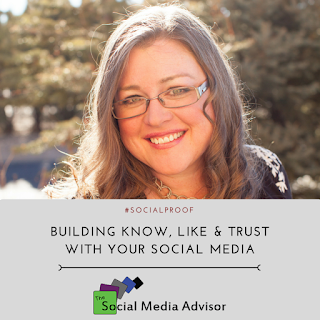We’ve talked about
#SocialProof before. It’s the “psychological preference for doing what other people are doing, because if other people are doing it, it proves that it must be worthwhile”. It’s what gives power to celebrity brand endorsements and phrases like “Limited Edition”.
First of all, you need to understand that it is far easier to jump from 20,000 YouTube
subscribers, Facebook Likes, etc. to 50,000 than it is to go from 0 to 1,500. This is called a growth curve. You will need to grind to build your social proof from scratch.
Secondly, you must leverage the numbers that provide the most
impact. If a brand new food blogger has 18k Pinterest followers on their niche boards, there must be something going on that they need to analyze and figure out how to capitalize on.
Here are thirteen types of
social proof and tips on how to get started:
1.
Raw Quantity: The number of people
engaging or interacting with you. Gather these numbers immediately. For physical/digital products, how many sales have you made? Blog or podcast: how many countries do people listen or read from? Social media presence: number of followers and number of posts fall into this category.
2. Celebrity and Expert Endorsements: This could take up a post all its own. When you’re first building your social proof, the likelihood of a celebrity endorsement is slim. Experts in your field, however, are much easier to approach. These are called influencers and influencer marketing is its own niche.
3.
Testimonials and Quotes: Authors use other author or industry professional’s quotes on their covers.
Testimonials are a fantastic way to build social proof.
4. Featured locations: Did you show up on a podcast? Have you been featured in a popular or industry standard publication? If not, why not contact larger publications for guest posting? They are often starved for online content, so take the time to target your niche.
5.
Certifications: completely self-explanatory. If you have any that can be used as
social proof, display them proudly.
6. Referrals: the #1 trusted source of advertising as proven by numerous case studies. Start by creating a referral program where a referring customer receives a discount for their loyalty.
7. Gazing: Use photos and images to draw the reader’s eye to your call to action.
8.
Ratings and Reviews: One of the most important parts of your
Online Reputation and also the fastest growing part of social proof in our mobile market. Encourage your customers to leave reviews, but be careful if you offer perks. This can seem scammy and have the opposite effect you’d intended.
9. Case Studies and Proof of Concept: Lead by example in using yourself as a case study or use other people’s transformation studies as proof.
10. Limited Time Offer or The Fear of Missing Out: Give a deadline, and stick to it. Create exclusivity. Both of these combine to make a very strong case for social proof.
11.
Social (Media) Proof: This is really difficult from the beginning. You can start by creating a hashtag that represents you and your
business. Use it and encourage your clients and customers to use it as well.
12.
Rankings: New product launch? Use a product launch site. Food blogger? Try to get on Food Gawker. Almost every industry has submission sites that can get your
brand noticed and give you the ranking you need to jump to the top.
13. Integration and Platforms: If your product or service is used or integrated with others, show it.
14. SEO: The higher your rank on Google, the more automatic
credibility you give your brand and your business.
How are your doing with your social proof? Any questions? Tell us in comments and we’ll tackle them in a future post.









